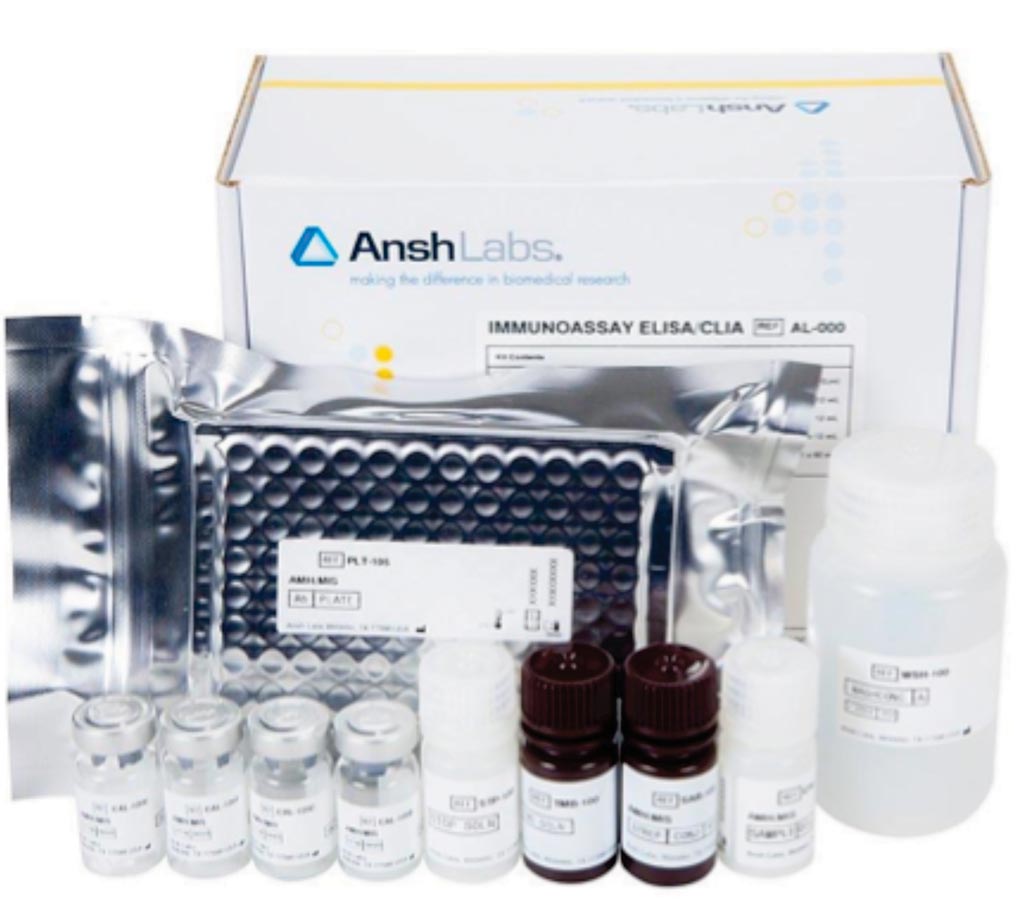Diagnostic Test Aids Determination of Menopausal Status
By LabMedica International staff writers
Posted on 15 Nov 2018
Menopause refers to the time in a woman’s life when she stops having a menstrual period and is no longer fertile. During the menopausal transition, the body's production of estrogen and progesterone, two hormones made by the ovaries, varies greatly.Posted on 15 Nov 2018
After menopause, women enter post-menopause, when they are more vulnerable to heart disease and osteoporosis. It is important for women to understand their stage of menopausal transition to learn what, if any, additional health risks they may face and any preventative health steps to take.

Image: The PicoAMH ELISA test measures the amount of Anti-Müllerian Hormone (AMH) in the blood (Photo courtesy of Ansh Labs).
The US Food and Drug Administration (FDA, Silver Springs, MD, USA) has approved marketing of an enzyme-linked immunosorbent assay diagnostic test as an aid in the determination of a patient’s menopausal status. The FDA reviewed data submitted by the sponsor that included 690 women aged 42 to 62 years who participated in the multicenter, longitudinal Women’s Health Across the Nation study.
The PicoAMH ELISA test (Ansh Labs, Webster, TX, USA) measures the amount of Anti-Müllerian Hormone (AMH) in the blood. AMH levels represent an indicator available to clinicians to determine whether a woman is approaching or is likely to have reached her final menstrual period. The PicoAMH Elisa test is meant for use only in conjunction with other clinical assessments and laboratory findings. The data from the FDA review showed that the PicoAMH Elisa test performed reasonably well at determining levels of AMH in the blood and identifying women who had their last menstrual period and women who were more than five years away from their last menstrual period.
Clinicians should carefully evaluate PicoAMH Elisa test results in the context of a full clinical work up to ensure that contraceptives are not discontinued in women who have not yet reached menopause and that uterine bleeding due to endometrial cancer is not dismissed as a diagnosis. The PicoAMH Elisa test should not be used to assess a woman’s fertility status or to monitor or predict the ovarian response in women undergoing or planning to undergo fertility treatments.
Courtney Lias, PhD, from the FDA, said, “Diagnostic results about a woman’s menopausal status may prompt discussions about preventative care for women experiencing menopausal symptoms. This test, when used in conjunction with other clinical assessments and laboratory findings, can help inform discussions about preventative care, such as ways to help prevent loss in bone mineral density or to address cardiovascular disease, both of which are known to increase after menopause.”













